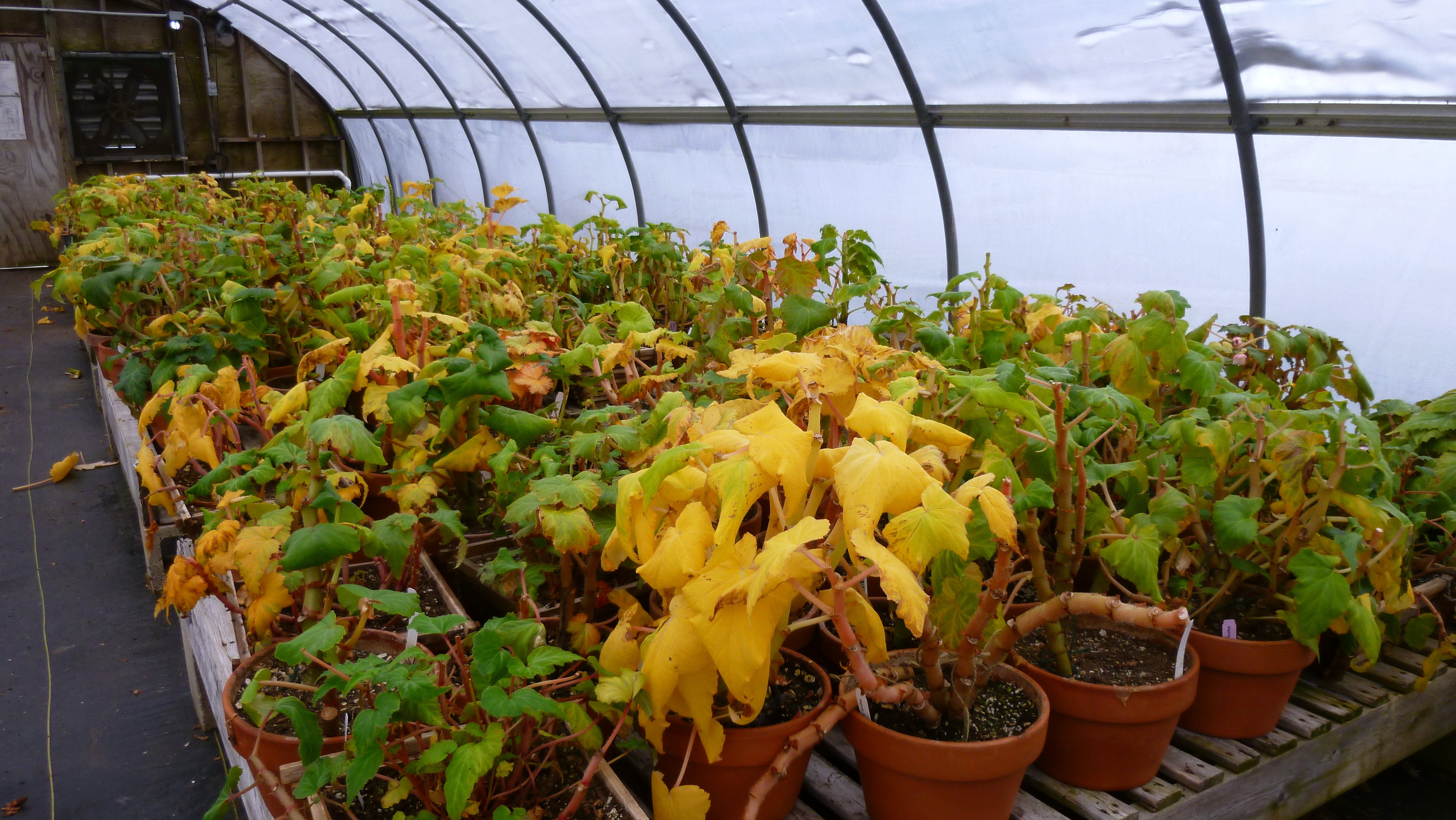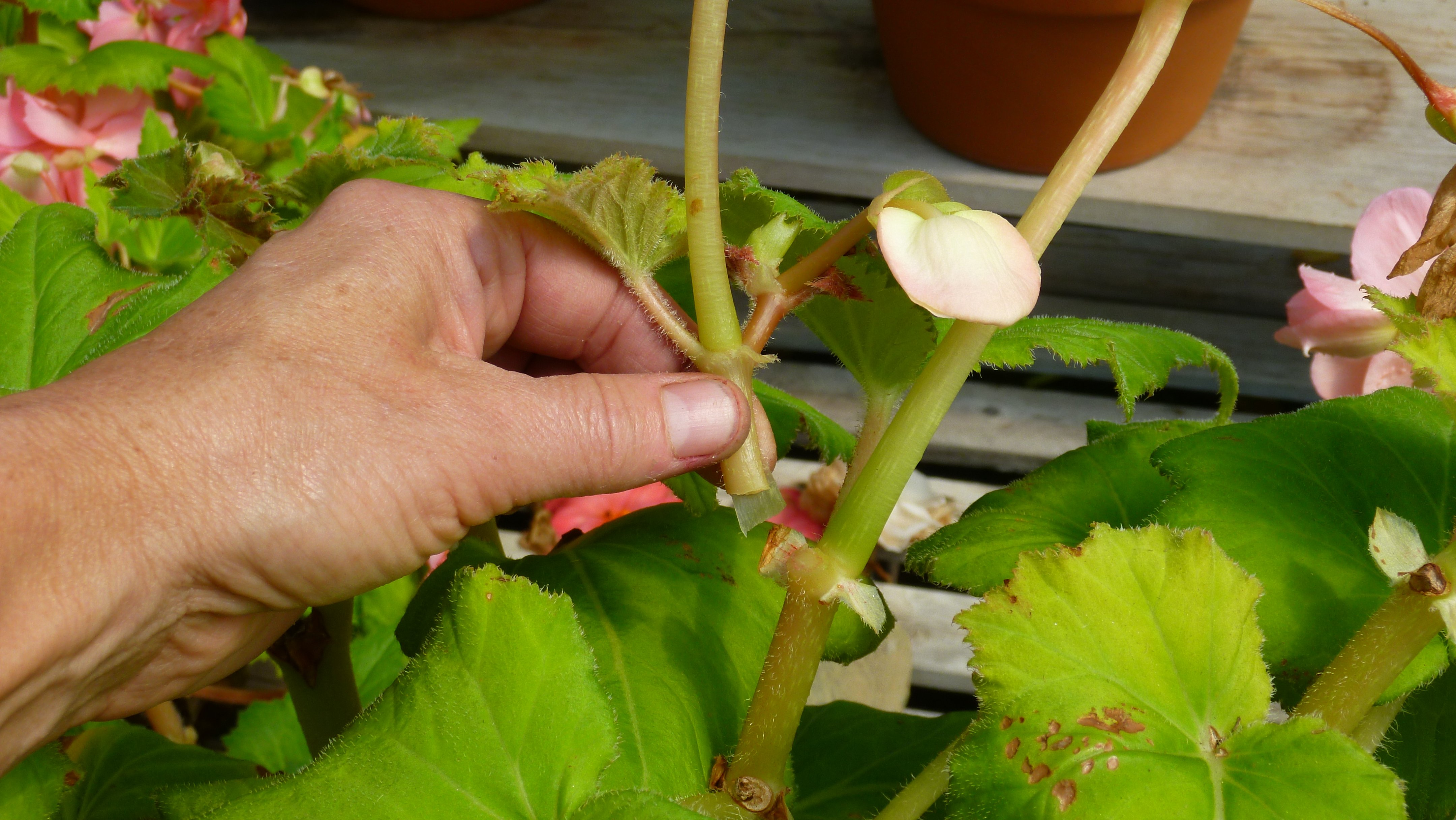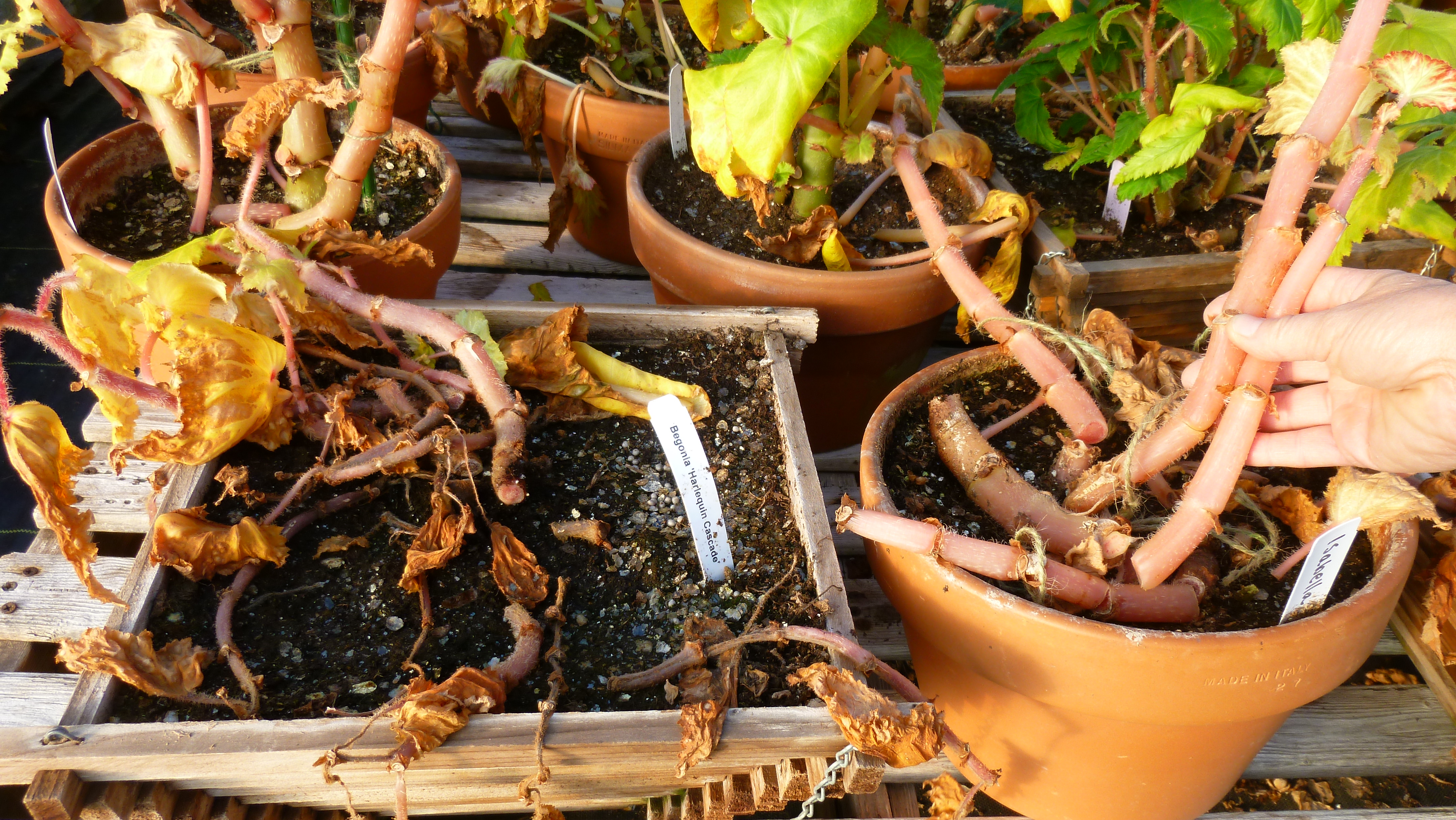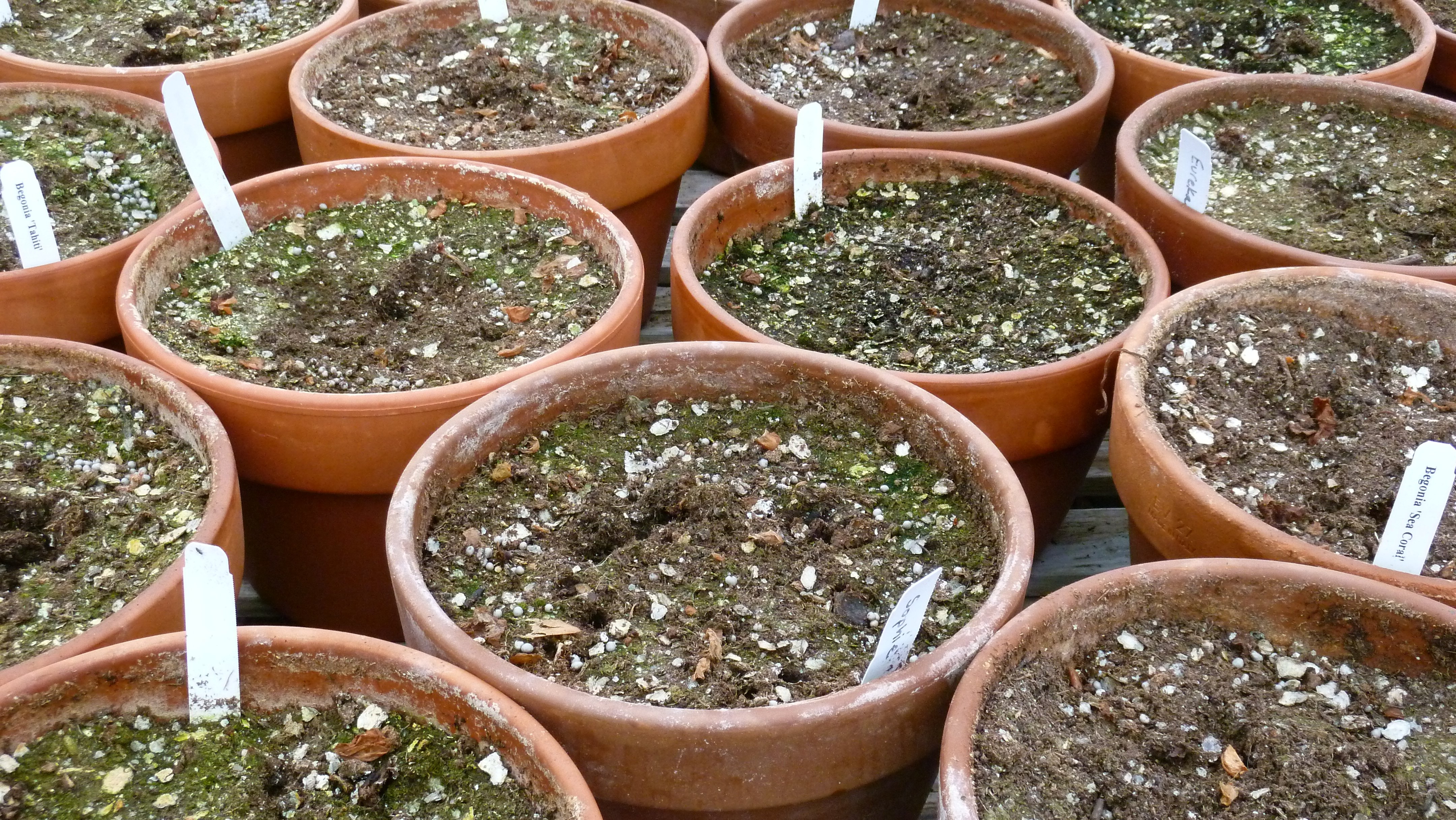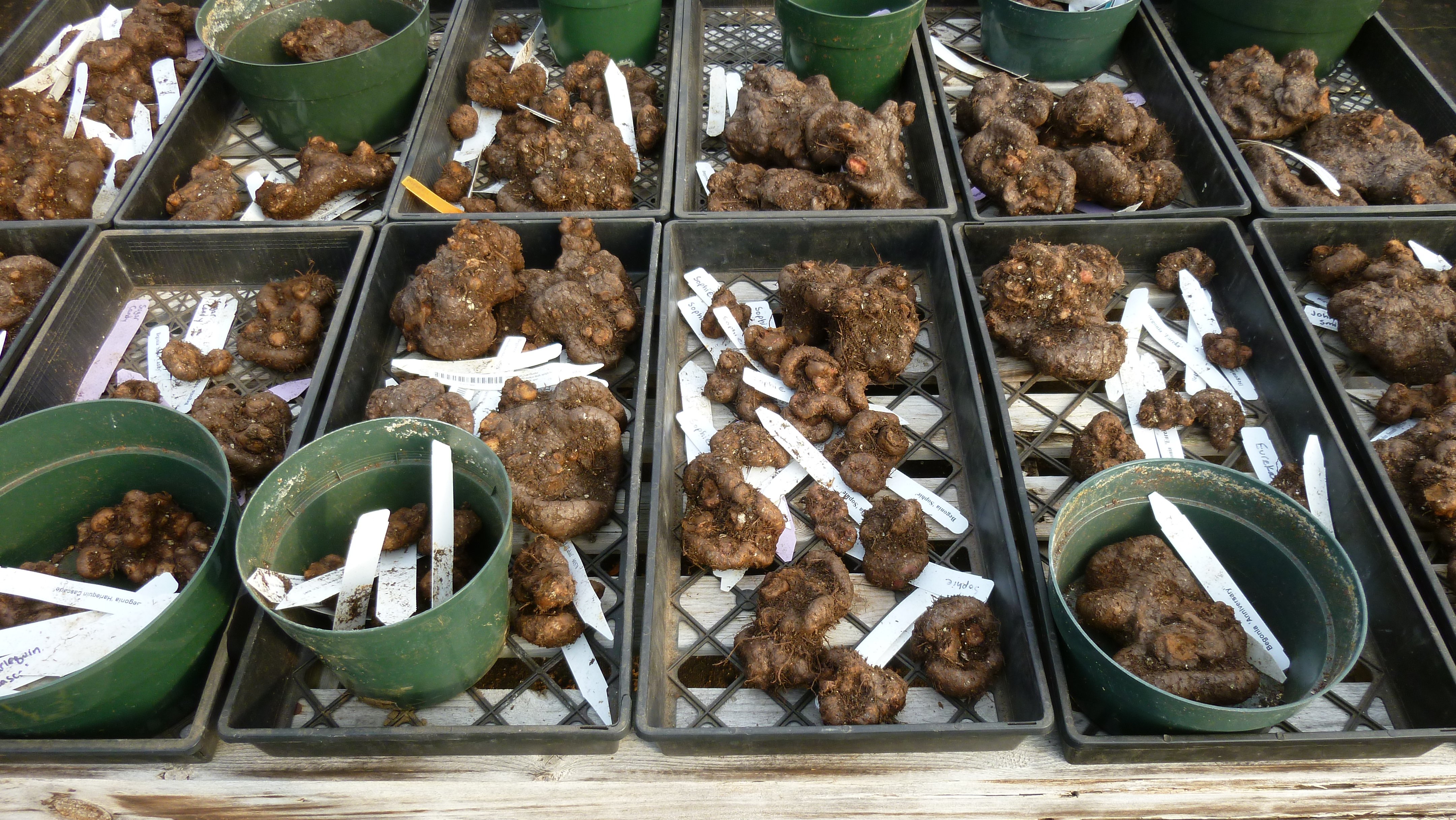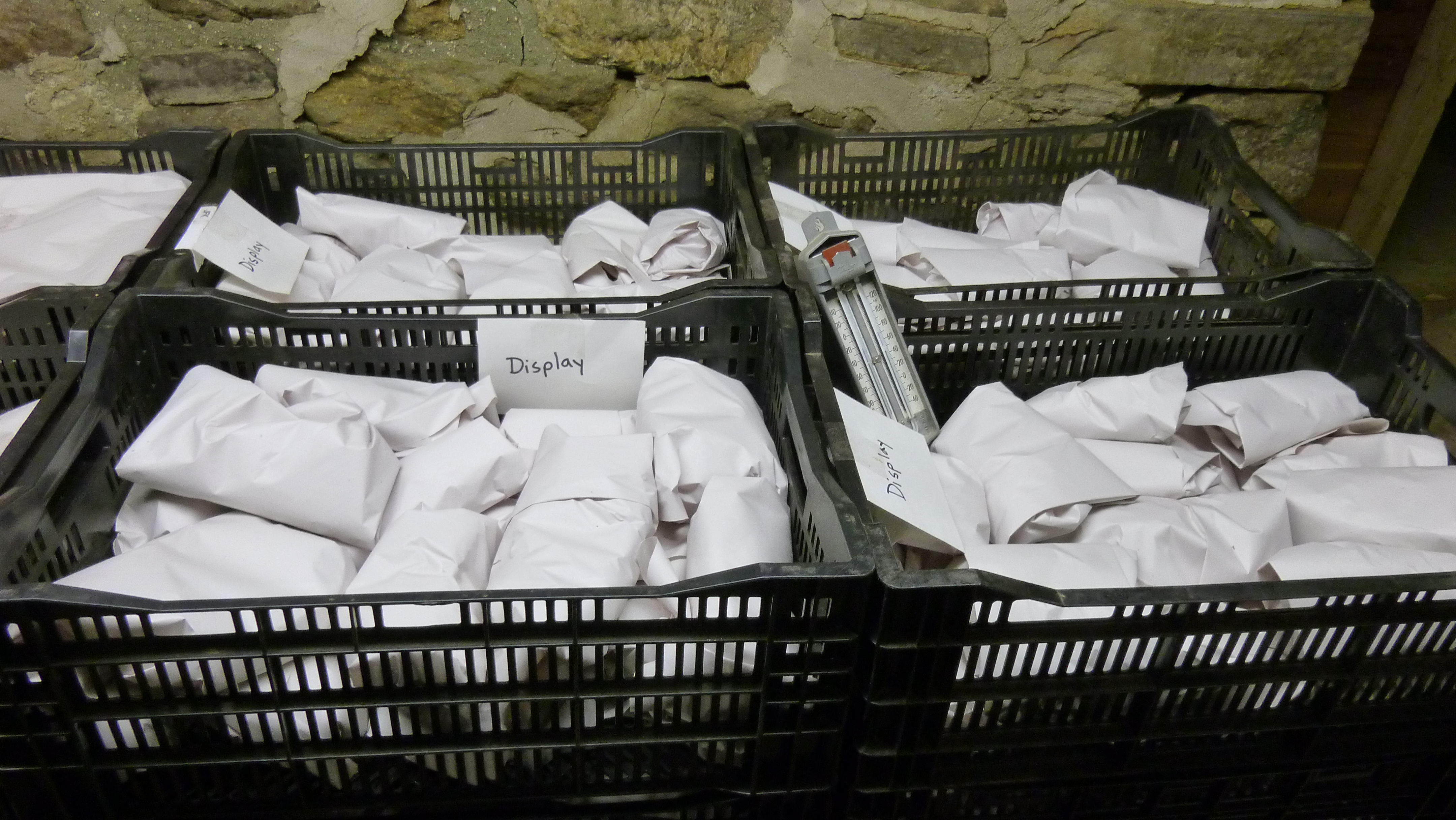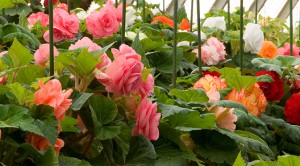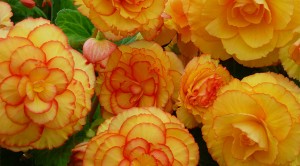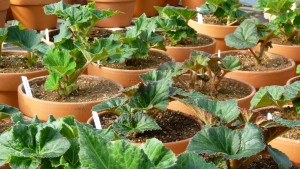Going Dormant, and Winter Slumber
By Cheryl Whalen, Head Gardener
Rewind a few months back to early October . . . The tuberous begonias in our display house begin to show signs of fatigue after four hot summer months of blooming their heads off. I close the doors to the public for the season, and the plants, no longer in the spotlight, breathe a sigh of relief. Even though there is still some color radiating from the display, the flowers are smaller and sparse. Tinges of yellow are beginning to show up on previously lustrous green foliage. Both the plants and I are in agreement. We only want to be in the public eye when we are flaunting fantastic flowers and fresh foliage so as to not disappoint our visitors with a subpar show. As I close the doors, I applaud the performance of the begonias with a standing ovation. I couldn’t be happier with their splendid show in what seemed to be a hotter than normal summer. Now begins the process that leads to a well- deserved winter slumber.
October and November are not stressful for the begonias. I turn down the thermostat in the greenhouse to near 45F. As the autumn temperatures outside start to dip, the plants respond. Flowers and foliage fade and begin to look dull. I check the plants weekly for watering needs, providing drinks for those plants with dry soil. I don’t force the dormancy issue. I let the plants go down on their own time. That’s important because the plants need time to prepare their tubers before sleep. Energy drains out of the leaves and stems back down to the tubers storing essential fuel for the next growing season.
I do go through the plants and gently pinch out their growing tips. It only hurts for a second. New flowers keep being produced as the stem tip grows out. By pinching the tips, the plants no longer need to expend energy trying to make new flowers at this late date.
For several weeks, I see slow progress in the greenhouse toward that ultimate goal of dormancy. Then as the days get shorter I see dramatic changes. About the time in mid-November when I leave for work in the dark and return home in the dark, the plants are full speed ahead in the process. The foliage completely yellows and stems redden. I go through the plants once a week cleaning up fallen leaves and giving each stem a gentle tap. Stems that are ready to be removed fall over easily like trees being felled in the forest.
By early December, I’m left with what looks to the innocent bystander like just a bunch of soil-filled pots. It’s time to unpot those precious tubers that lie within. I knock each plant out of its pot and carefully unearth each tuber. I peel away the soil from the tuber and brush it off with my seasoned, soft paintbrush. I examine each tuber for soundness. Most are happy and healthy. Sometimes I find one or two that are soft and squishy and need to be discarded. It’s sad when that happens.
After their once-over health check, the tubers are placed in trays all sorted by variety. The sizes and shapes of the tubers are really quite variable and fun to look at!
I turn the thermostat up to 50 degrees in the greenhouse while the tubers are exposed. They will sit out in the air for a week or so to cure before packing. I hesitate to put them to bed too moist for fear that winter rot might take hold. I do find myself compelled to cover the whole lot each evening with a tarp. It makes me feel better if not the tubers!
The packing process is easy. After checking in for inventory roll call, each tuber is wrapped in a sheet of newsprint paper with the proper label tucked securely inside. The precious paper packages are then gently laid in lily crates. The crates get shuffled off to the guest cottage dirt cellar where they are neatly stacked. The tubers settle in for their long winter’s nap. They rest . . . I rest. It won’t be long until St. Valentine’s Day, and we can do it all again!! Happy winter to all!

